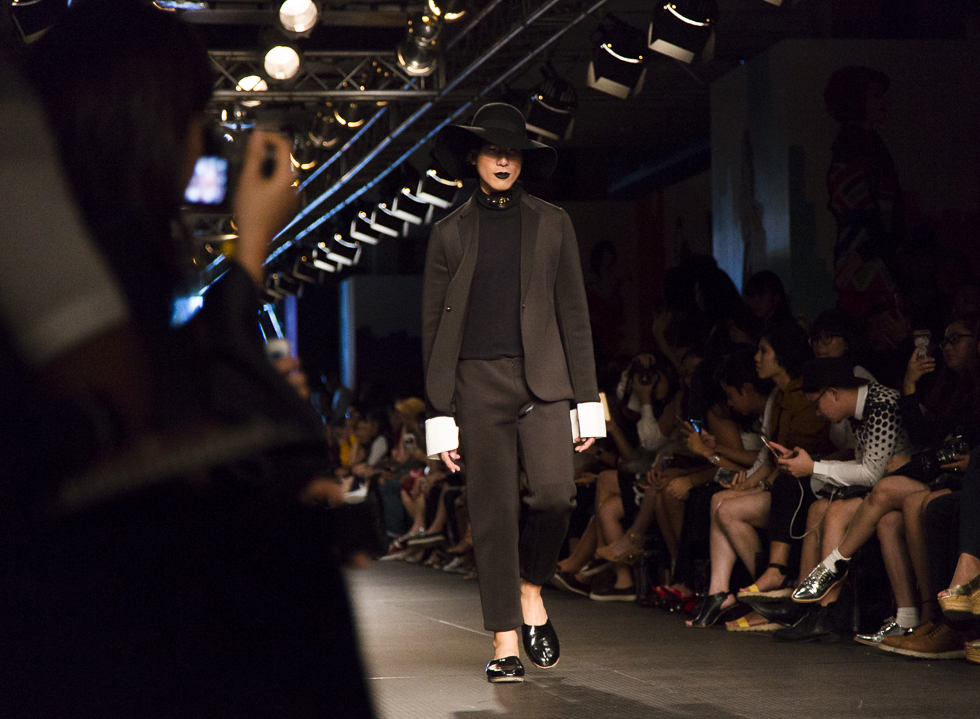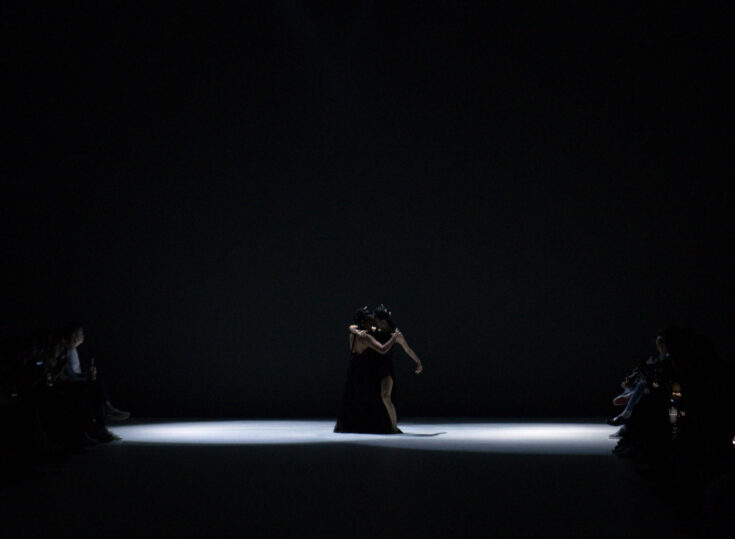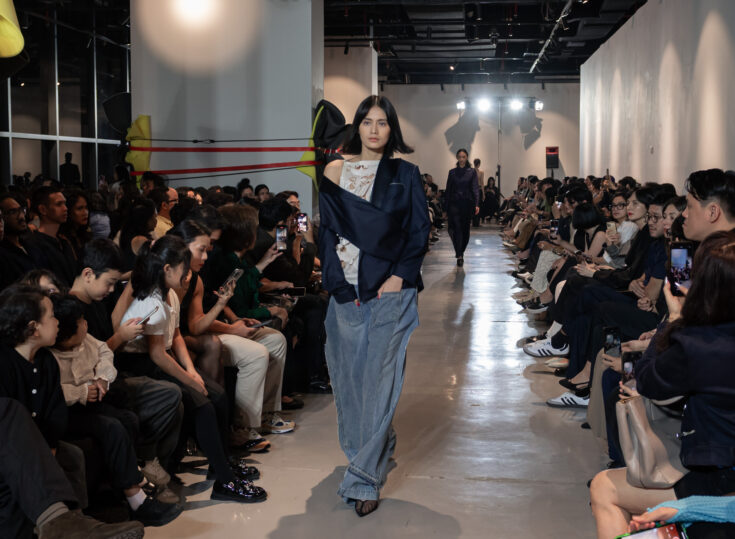No matter how well off you are, whether you’re a billionaire, an A-list actor or government minister, it’s impossible to divorce yourself completely from the existence of streets life in Jakarta. It’s there to greet you the moment you step out of your luxury condominium. It’s there to accompany your ride as you head out in expensive car for a fancy dinner meeting. And it is from this chaotic and rackety life of the streets that designer Patrick Owen found his inspiration for his eponymous label’s Spring Summer 2016 collection.
Patrick aimed high with this collection, which is mainly muted in black and white. He reimagined the characters from the streets, such as Bajaj drivers, street buskers and peddlers, in an alternative version through his hyper-glamourised looks. The white coatdress with rounded shoulders that came with illustrations of the city’s old colonial buildings at front and graffiti of David Bowie at the back could be applied to a street busker. And perhaps, the black outerwear with a figure of an old man in traditional Betawi outfit, worn over white turtleneck top and shorts were meant for the shifty Bajaj driver.
But it is in the delivery where the designer fell short. As the collection unfolds, there’s a sense that you’re watching a romanticised take of the streets made by someone who isn’t familiar with the said reality in the first place. It feels as though it was meant for rich individuals who crave for the exoticism of the streets sans its misery – someone who prefers watermelon but without its seeds, if you will.
Indeed, these looks were so detached from its source of inspiration that it came across as patronising. Even the figure of an old man on the outerwear mentioned above has the impression of a caricature instead of an act of homage. Some of the models had their faces partially or entirely covered in black balaclava. Hopefully the gesture was just to inject certain theatricality to the show instead of suggesting that they were too ugly to be seen. Patrick could at least show some of the looks on real characters scouted from the streets.
In contrast, fellow local designer Sherly Hartono, who is well known for citing abang abang of the streets as her creative stimulus, faces no such problem in her works. Take her now (in)famous jacket worn by Joe Jonas for example, the designer made no attempt to hide the childishness as well as the crudeness of the prints – cutleries, bitter bean (petai), Rupiah notes and a bowl of chicken noodle (bakmi).
Sherly assimilated these components and struggles of life on the streets into her collection in a way that is oddly dignifying. The Rupiah suggested that to be a man/woman of the streets means living from one paycheck to another. Obstacles could be blessings in disguise, just like the stinky bitter bean that conceals various healthy benefits. Life may be hard but happiness is easily procured with a simple bowl of bakmi.
To be sure, when taken out of context, Patrick Owen’s collection is solid. You don’t have to question his ability as a fashion designer nor the quality of the collection. But when put in context, you can’t help but to question his sincerity.























